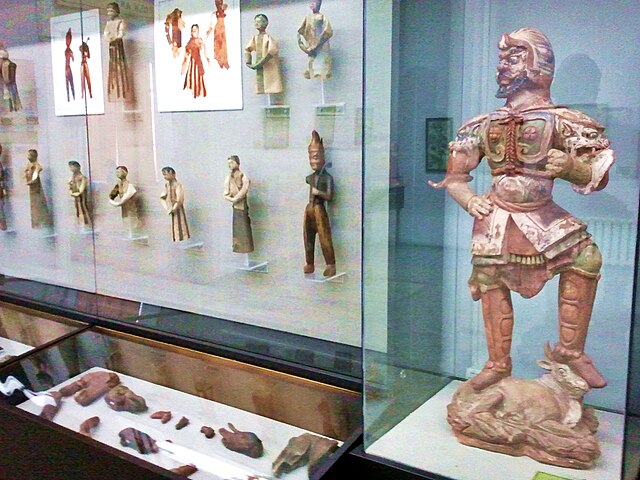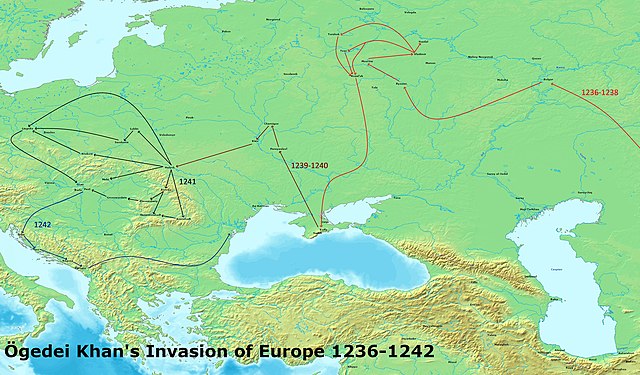The Xianbei were an ancient nomadic people that once resided in the eastern Eurasian steppes in what is today Mongolia, Inner Mongolia, and Northeastern China. The Xianbei were strongly suggested to be a multilingual, multi-ethnic confederation consisting of mainly Mongolic, and, to a minor degree, Tungusic and Turkic peoples. They originated from the Donghu people who splintered into the Wuhuan and Xianbei when they were defeated by the Xiongnu at the end of the third century BC. The Xianbei were largely subordinate to larger nomadic powers and the Han dynasty until they gained prominence in 87 AD by killing the Xiongnu Chanyu Youliu. However unlike the Xiongnu, the Xianbei political structure lacked the organization to pose a concerted challenge to the Chinese for most of their time as a nomadic people.

Figure of a Xianbei warrior from the Northern Dynasties (286–581 AD) era. The figure wear a covered "wind hat", trousers, short upper tunic and a cape tied around the neck, designed to protect against the wind and dust.
Northern dynasties horseman
Northern Wei cavalry
Northern Wei cavalry
Mongolia is a landlocked country in East Asia, bordered by Russia to the north and China to the south. It covers an area of 1,564,116 square kilometres, with a population of just 3.3 million, making it the world's most sparsely populated sovereign state. Mongolia is the world's largest landlocked country that does not border a closed sea, and much of its area is covered by grassy steppe, with mountains to the north and west and the Gobi Desert to the south. Ulaanbaatar, the capital and largest city, is home to roughly half of the country's population.
7th-century artifacts found 180 km (112 mi) from Ulaanbaatar
1236–1242 Mongol invasions of Europe
Genghis Khan, the first Mongol Emperor
The eighth Jebtsundamba Khutuktu, Bogd Khaan








